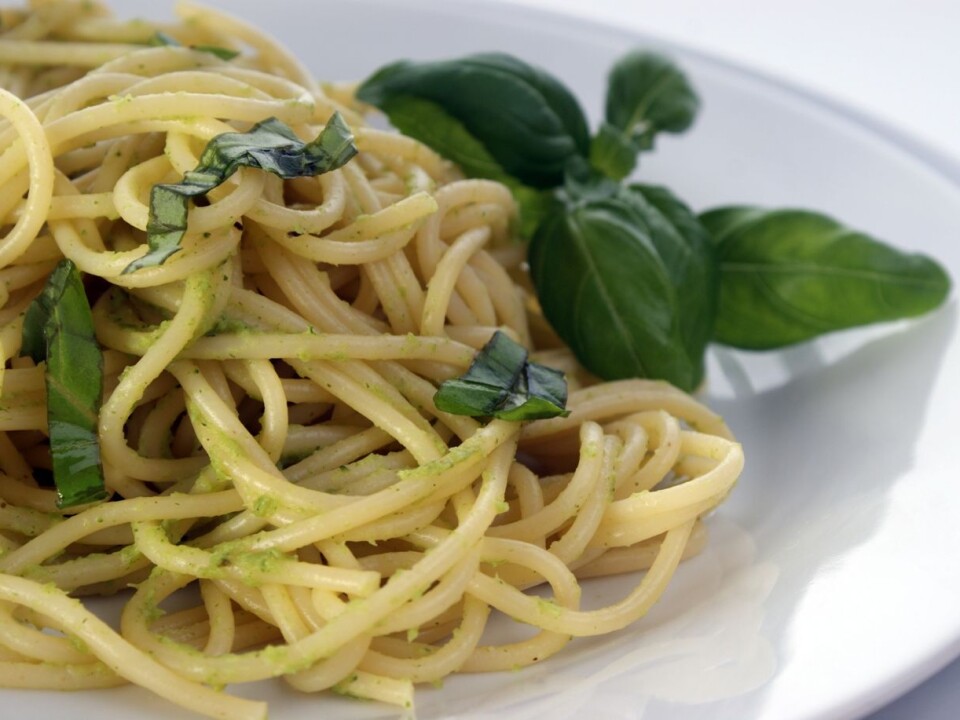
Bacteria can wake up in your kitchen after a thousand years of sleep
Do you ever cook too much rice or pasta and save the remains for another day? Then you should watch out for this little critter. The bacteria can have been dormant for over a millennium – only to be energised back to life when you prepare your dinner.
Denne artikkelen er over ti år gammel og kan inneholde utdatert informasjon.
If you wake up such bacteria you’re looking for trouble. The result for you and your table mates can be nausea, vomiting, stomach cramps and diarrhoea.
Not many of us are aware of how risky it can be to eat rice or pasta which has been cooked and then stored too long at room temperature.
Here is the explanation: Rice and pasta contain relatively large amounts of bacterial endospores which survive the boiling process. As certain types of endospores undergo activation, germination and outgrowth, they create a heat-stable toxin.
Two reminders
Food researchers at the Norwegian University of Life Sciences (NMBU) offer two morsels of advice:

-
If you have made some rice or pasta and have some leftovers you want to save for reheating tomorrow, be careful! If you let the food stand at room temperature until the next day the bacteria that cause food poisoning can have multiplied. Watch out! They can have formed toxins which won’t go away with the subsequent reheating. The solution for surplus rice or pasta is to let it cool down and steam off. Then you place it in the refrigerator without worry.
- However, watch the temperature of your fridge. It should be 4° C or less. If you don’t trust the refrigerator’s thermostat, buy a little thermometer and keep it inside the appliance.
Withstanding
“Endospore-forming bacteria are a really fascinating group,” says food researcher Hilde Mellegård.
“These bacteria are capable of reducing themselves to a spore-like state in which they can lie dormant for thousands of years without any nourishment or water.
Such endospores can withstand not only drought, but radiation, powerful disinfectants and antibiotics. And you can boil them in one of your pots. They still don’t die.

Researchers at NMBU are now trying to find an answer to what makes these bacteria so extremely durable. What is it that springs them into life in our kitchens?
Bacillus cereus, Bacillus subtilis, Bacillus licheniformis and Bacillus pumilus are the Latin names of four of these dangerous miscreants. We could call them “Sleeping Beauty” bacteria.
Norwegian discovery
Norwegian veterinarian Steinar Hauge, who later became a professor at the precursor to NMBU, found in 1947 that Bacillus cereus could be the cause of diarrhoea.
Japanese scientists discovered the structure of the toxin that some these bacteria created in 1997. In the same year the first human death from it was noted. A 17-year-old boy from Switzerland ate some pasta that had stood several days on the kitchen counter. He was poisoned even though he reheated the food before eating it.

It became clear that the toxin could withstand temperatures of 120 °C and pH values ranging from 2 to 12. The latter explains why our stomach acids have no effect on the toxin.
Anyone worth their salt in the restaurant business who makes loads of rice knows that it cannot be stored in room temperature more than a few hours. The food industry is very aware of the problems with endospore bacteria, which we find all around us. Kindergartens and institutions that care for the elderly, where many vulnerable victims can be affected, need to be aware of the threat.
But you need to think about this too. The endospore bacteria flourish on the pasta and rice you have in your cupboard.
Why do they wake up?
What enables these bacteria which have slept like Sleeping Beauty for ages to wake up and cause us trouble?
If scientists in Oslo find a good answer to that they can make it easier to ensure safe food treatment.
“One thing we know is that these bacteria create endospores when their living environment is poor,” explains Marina Aspholm.
“We also see that the mechanism that reactivates the bacteria after perhaps a thousand years is generally the same for all the endospore bacteria. The endospores have receptors that signal when it’s time to wake up,” says her colleague Hilde Mellegård.
“It’s an environment where they can spring into life.”
Waking bacteria
The food industry is constantly making new processed foods – meals which only need to be heated up. Naturally, they don’t want to sell products that make you sick.
One method is to heat food until it reaches a temperature that wakes the Sleeping Beauty bacteria up. Then the temperature is lowered a while to trick the bacteria into full activation. Now the food is heated again to a temperature that kills the live bacteria. Fully wakened, or activated, bacteria don’t have the resistance to heat which keeps them viable in their dormant endospore phase.
Another method being developed is high-pressure treatment.
“High-pressure treatment is all the rage now. High pressure is another way of waking up the bacteria and a subsequent heating can then kill them.”
“This can be a gentler form of treatment. It can preserve the nutrients in the food and make it taste better,” says Hilde Mellegård.
----------------------------------
Read this article in Norwegian
Translated by: Glenn Ostling






























